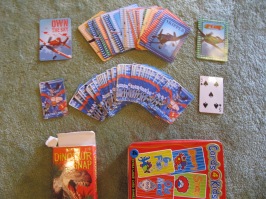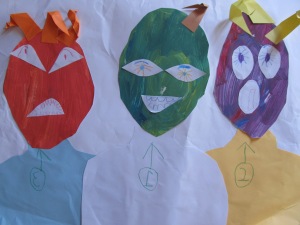While sitting in the principal’s office discussing a program that I had stumbled upon for helping to lower the rates of and effectively managing school bullying (refer to my earlier blog), the principal exclaimed “Yes, but what can we do to help these kids ‘toughen up’?”. I replied with “Do you mean resilience?” and the principal said “Oh yes, sorry, I shouldn’t have said it like that”.
I explained to the principal that it was not right to put the onus on the child for managing school bullying and then added “but actually what does help victimized children cope is when other children intervene on their behalf to defend them because it gives them a sense of self-worth that someone would step in to defend them and helps to remove the blame attributed by themselves and others for the incident”.
There is a lot to be said for encouraging resilience in school children and it can be incorporated into the social and emotional learning curriculum for schools. I located two easy-to-read articles from a popular resilience program’s website that are worth a read (here and here). The latter of the two links provides advice to parents.
However, the dangers of focusing too heavily on resilience is that individual teachers may interpret that as an opportunity to put increasing pressure on children (including those with learning difficulties) to cope, without having a supportive curriculum or working on resilience-building strategies with the child (independent of the problem they are having difficulty with).
Let me give you an example of how insistence on resilience can be problematic. My son Damian has autism and among other challenges that he experiences he has trouble packing and unpacking his school bag. This is not uncommon among children with autism. In fact, I have autism and I find simple practical tasks very challenging but I excel with most theoretical academic tasks (as does Damian).
It doesn’t matter how many times I practice any given practical task, which I have greater than average difficulty with, the difficulty always remains to some degree. What would help me for some activities is to have a visual guide but then I’d have to create visual guides for all types of tasks and remember to carry them along with me at the right time so I have never bothered. Instead, I just take longer to get things done and ask people for help a lot. It’s something I am willing to live with.
My son’s teacher (Mrs L) created a visual guide for Damian to help him to unpack his school bag but the visual guide was still not enough to help him manipulate items such as his lunch box to fit well into his school bag and that was an issue that persisted for Damian when it came time to pack his school bag at the end of the school day.
Yesterday, when I went to collect Damian from school he was in tears and Mrs L came over to talk to me about it. Apparently, up until now, Mrs L and a few of Damian’s classmates had helped Damian to pack his bag at the end of the day but Mrs L had decided that it was time that he managed the task independently. Mrs L also said that Damian often becomes frustrated and upset when he has trouble packing his school bag and in saying so indicated that he should not be.
Mrs L then turned to Damian and said that it was time for him to pack his bag himself and that she would give him a ‘dollar coin’ token (a class reward) each time he was able to persist in completing the task without getting upset about it*. I use similar incentives at home for motivating my children to do things that they find boring or challenging (refer to my earlier blog for a discussion of token reward systems) so I added that I would also give him a token for his reward chart at home if he could do as Mrs L suggested.
This morning, I gave it a bit more thought and said to Damian that maybe Mrs L could let him pack up a few minutes earlier than everyone else but I could see when we practiced packing his bag that frustration would still occur regardless of the time given. So then I asked Damian what he thought might help and he suggested putting less in the school bag. Unfortunately, I had already minimized the items in his school bag as much as possible to allow more room for his lunch box. Then, I had a light bulb moment: ‘Why not have a separate lunch bag!”
My boys have collected lots of medium-sized backpacks over the years so we decided on using his ‘Auskick’ bag as an honorary lunch bag from now on. He would still be putting his lunch in a bag but a bag with no other objects in it to get in the way.
I was in a bit of rush and wrote a letter to Mrs L to explain. I was hoping that I wouldn’t have to give her the letter and could talk to her instead because I didn’t have the time to edit it and it was likely to come across as blunt but unfortunately Mrs L was absent. Instead, I had to leave the letter for Mrs L to read on her return and explain the other bag to the substitute teacher.
The letter follows:
Dear Mrs L,
I have been thinking about the ‘packing the bag’ situation with Damian. Damian and I have autism. One of the traits that Damian and I share (I assume) is with doing practical things with multiple steps. Believe it or not, I still have trouble using EFTPOS machines and filling the car with petrol. No amount of practice can rectify this. At Uni, I excelled in theory and flunked practical (well not really because my reports were well written but my experiments never worked and I was always last finished). So my solution to be accommodating to Damian’s diagnosis is to allow him to have a separate lunch bag. I have sent him to school with two lunch bags today. His usual bag and his ‘Auskick’ lunch bag. I’d like him to use the ‘Auskick’ lunch bag to pack his lunch in every day. Please let me know if this is a problem.
Thankyou for understanding
Rachel
So my point of all of this is that a child should not be asked to ‘not get upset’ when having difficulty with a task or situation because they need to be ‘more resilient’ and instead be provided with strategies and alternatives to manage the problem. If it is generally observed that the child gets upset easily with most things then applying strategies to improve their overall resilience without singling them out in the class (i.e. part of the curriculum) but at the same time always looking to problem solve, keeping in mind that each child has their own personal strengths and challenges and what is easy to manage and cope with for one child is not so for another.
*Mrs L did not use the words ‘be more resilient’ as such. Mrs L used the words ‘be more persistent’ and ‘not getting upset’, which roughly equates to the same thing. A good definition of resilience can be found here.





